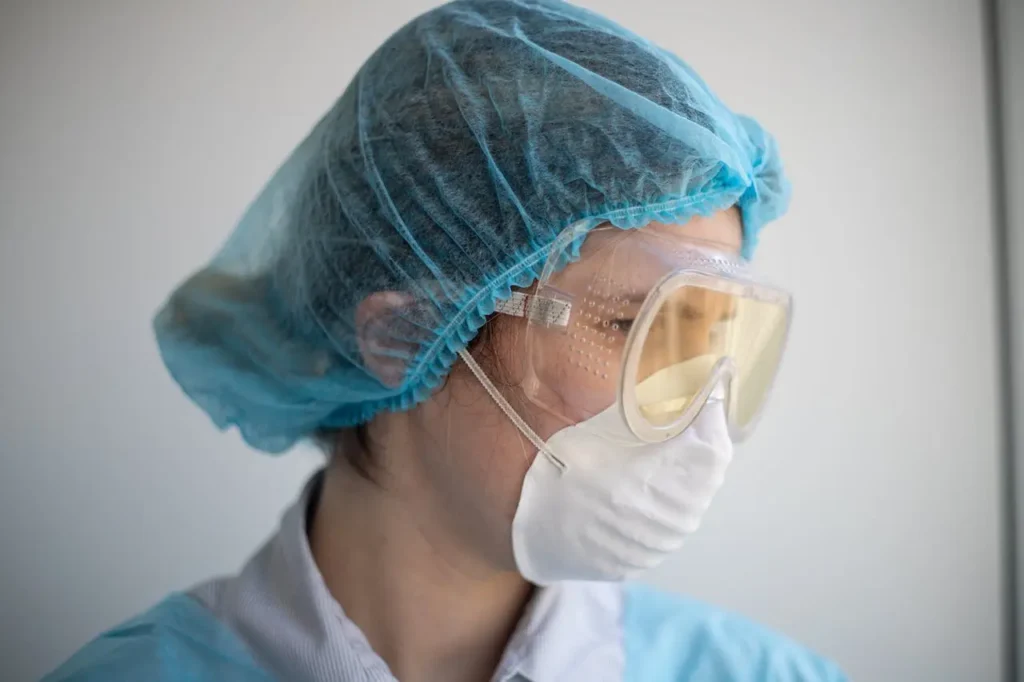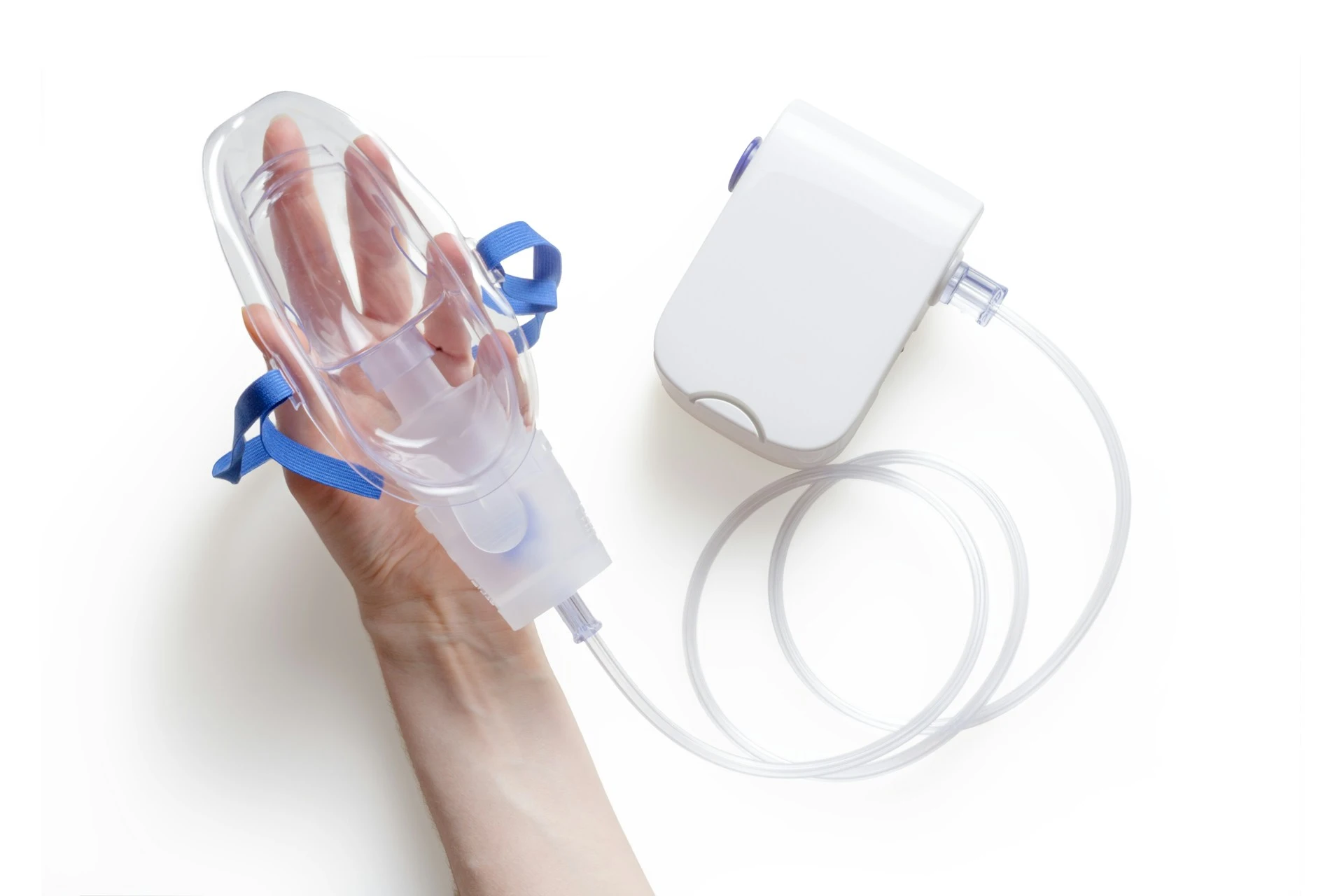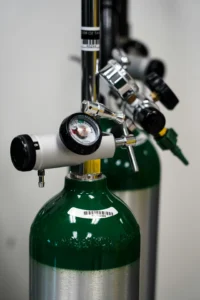How to become a Respiratory Therapist? Ultimate Guide

- What is a respiratory therapist?
- What does a respiratory therapist do?
- How to become a respiratory therapist? Education and training required
- Skills needed to become a respiratory therapist
- Career opportunities in the field of respiratory therapy
- How much does a respiratory therapist make?
- Respiratory therapist schools and certification programs
- Continuing education for respiratory therapists
- Caregiver strategies for oxygen therapy management
- Resources and support
- Conclusion
- Addressing common questions and concerns about respiratory care
What is a respiratory therapist?
This post may contain affiliate links, meaning I may earn a commission if you make a purchase, at no extra cost to you. I only recommend products I trust. Thank you for your support.
A respiratory therapist is a healthcare professional who specializes in the assessment, treatment, and management of patients with respiratory conditions.
These highly skilled individuals play a vital role in saving lives and improving patient outcomes. Their primary goal is to help patients breathe easier and improve their lung function.
Respiratory therapists work in various healthcare settings, including hospitals, clinics, and home care. They are trained to provide care for patients of all ages, from newborns to the elderly.
They are responsible for evaluating, treating, and monitoring patients with respiratory disorders such as asthma, chronic obstructive pulmonary disease (COPD), pneumonia, and respiratory failure.
If you’re wondering how to become a respiratory therapist, this article will guide you through the necessary education and certifications and help you understand the responsibilities and challenges of the profession.
Additionally, we shall explore respiratory therapist salary and provide insights into the financial aspects of this rewarding career path.

What does a respiratory therapist do?
Respiratory therapists perform various duties in helping patients manage and overcome respiratory challenges, thereby improving their overall quality of life.
Here’re the duties of a respiratory therapist:
1. Patient assessment
Conduct patient assessments to evaluate their respiratory conditions, including lung function, blood oxygen levels, and overall respiratory health. This may involve using diagnostic tools and techniques to gather essential data.
2. Airway management
Assessment and maintenance of a patient’s airway. It includes techniques such as suctioning, airway clearance, and the insertion of airway adjuncts to ensure proper breathing and oxygenation.
3. Manage ventilators
Monitor and manage mechanical ventilators for patients who require assistance with breathing. This involves setting ventilator parameters, performing ventilator checks, and responding to alarms and changes in patient status.
4. Oxygen therapy
Assesses the need for oxygen, determine the appropriate delivery method, and monitor the patient’s response to the therapy to patients with respiratory insufficiency or failure.
5. Chest physiotherapy
Performing techniques such as chest percussion, vibration, postural drainage, and breathing exercises to assist in the removal of mucus and improve ventilation.
6. Conduct diagnostic tests
Perform and interpret diagnostic tests such as arterial blood gas (ABG) analysis, pulmonary function tests, and sleep studies to assess respiratory function and aid in diagnosis and treatment planning.
7. Nebulizer therapy
Deliver respiratory medications through a nebulizer device to treat conditions such as asthma or chronic obstructive pulmonary disease (COPD).
8. Tracheostomy care
Caring for patients with tracheostomies, including suctioning the airway, changing the tracheostomy tube, monitoring for complications, dressing changes, and tube maintenance.
9. Patient education on respiratory health
Educate patients and their families about respiratory conditions, treatment plans, and the proper use of respiratory equipment.
10. Team collaboration
Collaborate with physicians to create and implement respiratory care plans tailored to individual patients. This includes determining the appropriate therapies, medications, and interventions for each patient’s specific respiratory needs.
11. Emergency response
Respond to emergencies, including respiratory distress or cardiopulmonary arrest, by providing immediate interventions, resuscitation efforts, and life support measures as part of a code blue team.
12. Ensure Equipment Functionality
Maintain and calibrate respiratory equipment, such as ventilators, nebulizers, and oxygen delivery devices, to ensure their proper functioning and safety for patient use.
13. Documenting patient care
Maintain accurate and detailed patient records, documenting therapy outcomes, and communicating effectively with the healthcare team to ensure continuity of care.
How to become a respiratory therapist? Education and training required
To become a respiratory therapist, you need to follow a specific path that includes education, training, and licensure.
Here are the general steps to pursue a career in respiratory therapy:
1. Obtain a Degree
- Complete an associate’s or bachelor’s degree in respiratory therapy from an accredited program.
- These programs typically include coursework in anatomy, physiology, patient care, and respiratory therapy techniques.
2. Gain Clinical Experience
- Participate in clinical rotations or internships as part of your respiratory therapy program to gain hands-on experience working with patients and respiratory equipment.
3. Obtain Licensure
- Pass the National Board for Respiratory Care (NBRC) exam and obtain either a Certified Respiratory Therapist (CRT).
- These credentials demonstrate proficiency in the field and are often required for employment.
- Some states may require additional licensure beyond this certification.
4. Optional Advanced Certification
- Consider pursuing advanced certifications, such as the Registered Respiratory Therapist (RRT) credential, which may lead to increased job opportunities and higher earning potential.
5. Continuing Education
- Engage in continuing education to stay current with advancements in respiratory therapy and maintain licensure.
Skills needed to become a respiratory therapist
To become a respiratory therapist, you need a combination of specific skills, education, and training.
Here are the key skills needed to pursue a career in respiratory therapy:
1. Technical competence
Proficiency in operating respiratory therapy equipment, understanding pulmonary function tests, and interpreting medical data.
2. Critical thinking
Ability to analyze patient symptoms, assess respiratory conditions, and formulate effective treatment plans.
3. Effective communication
Clear and empathetic communication with patients, families, and healthcare teams to ensure accurate information exchange and support.
4. Attention to detail
Precise documentation of patient records, medication dosages, and treatment procedures to maintain quality care standards.
5. Problem solving skills
Quick and effective resolution of emergent respiratory issues, troubleshooting equipment malfunctions, and adapting to changing patient needs.
6. Compassion and empathy
Providing emotional support and reassurance to patients during procedures, recovery, and chronic illness management.
7. Team collaboration
Working collaboratively with physicians, nurses, and other healthcare professionals to deliver comprehensive patient care and achieve treatment goals.
8. Therapeutic procedures
Proficiency in performing various respiratory treatments and procedures such as administering oxygen, managing ventilators, and conducting chest physiotherapy.
Career opportunities in the field of respiratory therapy
The demand for respiratory therapists is expected to grow significantly in the coming years. With an aging population and an increase in respiratory diseases, the need for skilled professionals in this field is on the rise.
Respiratory therapists can find employment in various settings, including hospitals, clinics, home care agencies, and long-term care facilities.
Furthermore, they have opportunities for career advancement and specialization. They can pursue advanced certifications in areas such as:
- Neonatal/pediatric respiratory care
- Sleep disorders
- Pulmonary function testing
These specialized certifications open doors to higher-level positions, research opportunities, and leadership roles within the field.
How much does a respiratory therapist make?
According to the Bureau of Labor Statistics, the average annual respiratory therapist salary in the United States is $75,456. The highest 10% earned more than $87,430, while the lowest 25% earned $62,260.
However, salaries can vary depending on factors such as experience, education, location, and the employing healthcare facility.
Respiratory therapists who specialize in critical care or work in metropolitan areas tend to earn higher wages.
In terms of job outlook, the field of respiratory therapy is projected to grow by 22% from 2024 to 2030, much faster than the average for all occupations.
This growth is attributed to the increasing prevalence of respiratory conditions and advancements in medical technology, which require the expertise of respiratory therapists.
Respiratory therapist schools and certification programs
If you’re passionate about a career in respiratory therapy, here are 10 universities that offer accredited programs:
- University of California, San Francisco (UCSF): Bachelor of Science in Respiratory Care. Location: San Francisco, California, USA.
- The Ohio State University: Bachelor of Science in Respiratory Therapy. Location: Columbus, Ohio, USA.
- University of Toronto: Bachelor of Science in Respiratory Therapy. Location: Toronto, Ontario, Canada.
- Texas State University: Bachelor of Science in Respiratory Care. Location: San Marcos, Texas, USA.
- University of Sydney: Bachelor of Applied Science (Respiratory Therapy). Location: Sydney, Australia.
- University of Alberta: Bachelor of Science in Respiratory Therapy. Location: Edmonton, Alberta, Canada.
- University of Pittsburgh: Bachelor of Science in Respiratory Care. Location: Pittsburgh, Pennsylvania, USA.
- University of Otago: Bachelor of Health Sciences (Respiratory Therapy). Location: Dunedin, New Zealand.
- University of North Carolina at Chapel Hill: Bachelor of Science in Respiratory Therapy. Location: Chapel Hill, North Carolina, USA.
- University of South Alabama: Bachelor of Science in Respiratory Therapy. Location: Mobile, Alabama, USA.
Continuing education for respiratory therapists
Continuing education is crucial for respiratory therapists to stay up-to-date with advancements in the field and maintain their licensure or certification.
Various organizations and institutions offer continuing education programs and courses, both online and in-person.
These programs cover topics such as new treatment modalities, research updates, and professional development.
Respiratory therapists can also pursue advanced certifications to enhance their knowledge and skills.
The American Association for Respiratory Care (AARC) offers specialty credentials in areas such as adult critical care, neonatal/pediatric care, pulmonary function testing, and sleep disorders.
Here are some examples of advanced certifications that respiratory therapists can pursue to enhance their knowledge and skills:
- Registered Respiratory Therapist-Neonatal/Pediatric Specialist (RRT-NPS): Focuses on respiratory care for neonates and pediatric patients.
- Registered Respiratory Therapist-Sleep Disorder Specialist (RRT-SDS): Specializes in sleep medicine and disorders.
- Adult Critical Care Specialist (ACCS): Concentrates on advanced respiratory care in adult critical care settings.
- Neonatal/Pediatric Respiratory Care Specialist (NPS): Specializes in respiratory care for neonatal and pediatric patients.
- Certified Pulmonary Function Technologist (CPFT): Focuses on the assessment of pulmonary function in patients.
- Certified Asthma Educator (AE-C): Specializes in educating patients about asthma management.
Respiratory therapists can choose certifications based on their areas of interest and the patient populations they serve.
These certifications demonstrate expertise in specific fields and can lead to career advancement opportunities.

Caregiver strategies for oxygen therapy management
Managing oxygen therapy for a loved one can be challenging for caregivers.
Here are some strategies to help caregivers effectively manage oxygen therapy:
1. Education and Training
Caregivers should receive proper education and training on oxygen therapy, including the use of equipment, safety precautions, and emergency procedures.
This knowledge will empower caregivers to confidently manage oxygen therapy at home.
2. Regular Maintenance and Cleaning
Caregivers should ensure that oxygen equipment is regularly maintained and cleaned according to manufacturer guidelines.
This includes regularly changing oxygen tubing, cleaning the humidifier, and replacing filters as needed.
3. Monitoring Oxygen Levels
Caregivers should regularly check oxygen saturation levels using a pulse oximeter.
This helps ensure that the oxygen therapy is providing the necessary level of oxygenation. Any significant deviations should be reported to the healthcare team.
4. Safe Handling and Storage
Caregivers should handle oxygen equipment with care, avoiding open flames or smoking in the vicinity. Oxygen cylinders should be stored in a well-ventilated area away from heat sources.
5. Communication with Healthcare Team
Caregivers should maintain open communication with the healthcare team, reporting any changes in the patient’s condition or concerns related to oxygen therapy.
Regular follow-up appointments should be scheduled to assess the effectiveness of treatment.
Resources and support
These resources can provide valuable information, support, and a sense of community for respiratory therapists and caregivers.
Here are five resources and support groups that provide valuable information and support for respiratory therapists and caregivers:
1. American Association for Respiratory Care (AARC) – aarc.org
The AARC is a professional organization for respiratory therapists, offering resources, continuing education opportunities, and a community for networking and support.
2. American Lung Association (ALA) – lung.org
The ALA provides educational resources, support groups, and advocacy for patients with respiratory conditions and their caregivers.
3. COPD Foundation – copdfoundation.org
The COPD Foundation offers resources, educational materials, and support groups for individuals living with chronic obstructive pulmonary disease (COPD).
4. National Heart, Lung, and Blood Institute (NHLBI) – nhlbi.nih.gov
The NHLBI provides educational materials, research updates, and resources on respiratory disorders, including asthma, COPD, and sleep apnea.
5. Respiratory Therapy Zone – respiratorytherapyzone.com
Respiratory Therapy Zone is an online platform that offers educational articles, study guides, and resources for respiratory therapists and students.
Conclusion
Becoming a respiratory therapist is a rewarding career path for those interested in healthcare and helping patients with respiratory issues.
They play a crucial role in diagnosing and treating respiratory conditions, such as asthma, emphysema, and chronic bronchitis.
Their expertise in assessing, treating, and managing respiratory disorders is crucial in saving lives and improving patient outcomes.
From managing ventilator support to providing emergency care, respiratory therapists are an indispensable part of the healthcare team.
These highly trained professionals not only deliver direct patient care but also educate patients and their families about respiratory conditions, medications, and self-care techniques.
With their specialized knowledge and skills, respiratory therapists empower patients to manage their conditions effectively and improve their quality of life.
The field of respiratory therapy offers promising career opportunities and growth. With the increasing demand for respiratory care services, respiratory therapists are in high demand across various healthcare settings.
As the population ages and the prevalence of respiratory diseases continues to rise, the need for respiratory therapists will only continue to grow.
In conclusion, respiratory therapists are unsung heroes who provide critical care to patients with respiratory conditions.
Their dedication, expertise, and compassion make a significant impact in saving lives and improving the well-being of countless individuals.
If you’re considering how to become a respiratory therapist, it’s important to understand the education and training required, and job responsibilities for this profession.
You may also be interested to learn more about:
- Nurse practitioners
- What is ADL?
- Cognitive stimulation therapy activities
- Small fiber neuropathy
- Caregiver vs caretaker
- Pediatric nurse salary
- How long does it take to reverse prediabetes
- 21-day fatty liver diet plan
- How to comfort a dog with pancreatitis
- Best probiotics for women
- How much do physical therapists make
- Moringa benefits for men
- Developmental delays vs autism
- Hip fracture recovery tips
- 15 powerful tools for caregivers
- Best nephrologist near me
- Botox for migraines
- How to initiate end of life care
Addressing common questions and concerns about respiratory care
Can respiratory therapists prescribe medications?
Respiratory therapists cannot prescribe medications independently. However, they work closely with physicians and can recommend appropriate medications for respiratory conditions as part of the treatment plan.
Do respiratory therapists only work in hospitals?
While hospitals employ a significant number of respiratory therapists, they can also work in clinics, home care agencies, sleep labs, pulmonary rehabilitation centers, and long-term care facilities.
What is the difference between a certified respiratory therapist (CRT) and a registered respiratory therapist (RRT)?
A CRT is an entry-level credential, while an RRT is an advanced credential. RRTs have completed additional education and have a broader scope of practice, including the ability to provide advanced respiratory care.
What role did respiratory therapists play in managing COVID-19 patients?
Respiratory therapists played a crucial role in the management of COVID-19 patients, particularly those requiring respiratory support.
They assisted in intubation, ventilation, and monitoring oxygen levels, ensuring optimal respiratory function during the course of the illness.
Are respiratory therapists in high demand?
Yes, respiratory therapists are in high demand due to the increasing prevalence of respiratory conditions and the need for specialized care.
The job outlook for respiratory therapists is excellent, with ample career opportunities and room for growth.
How to become a respiratory therapist?
To become a respiratory therapist, individuals must complete an accredited respiratory therapy program and obtain licensure or certification.
The program can result in either an associate’s or bachelor’s degree in respiratory therapy.
If you’re interested in pursuing a rewarding career in respiratory therapy, explore accredited programs, such as those offered by the schools mentioned above, and begin your journey towards making a difference in the lives of patients with respiratory conditions.




